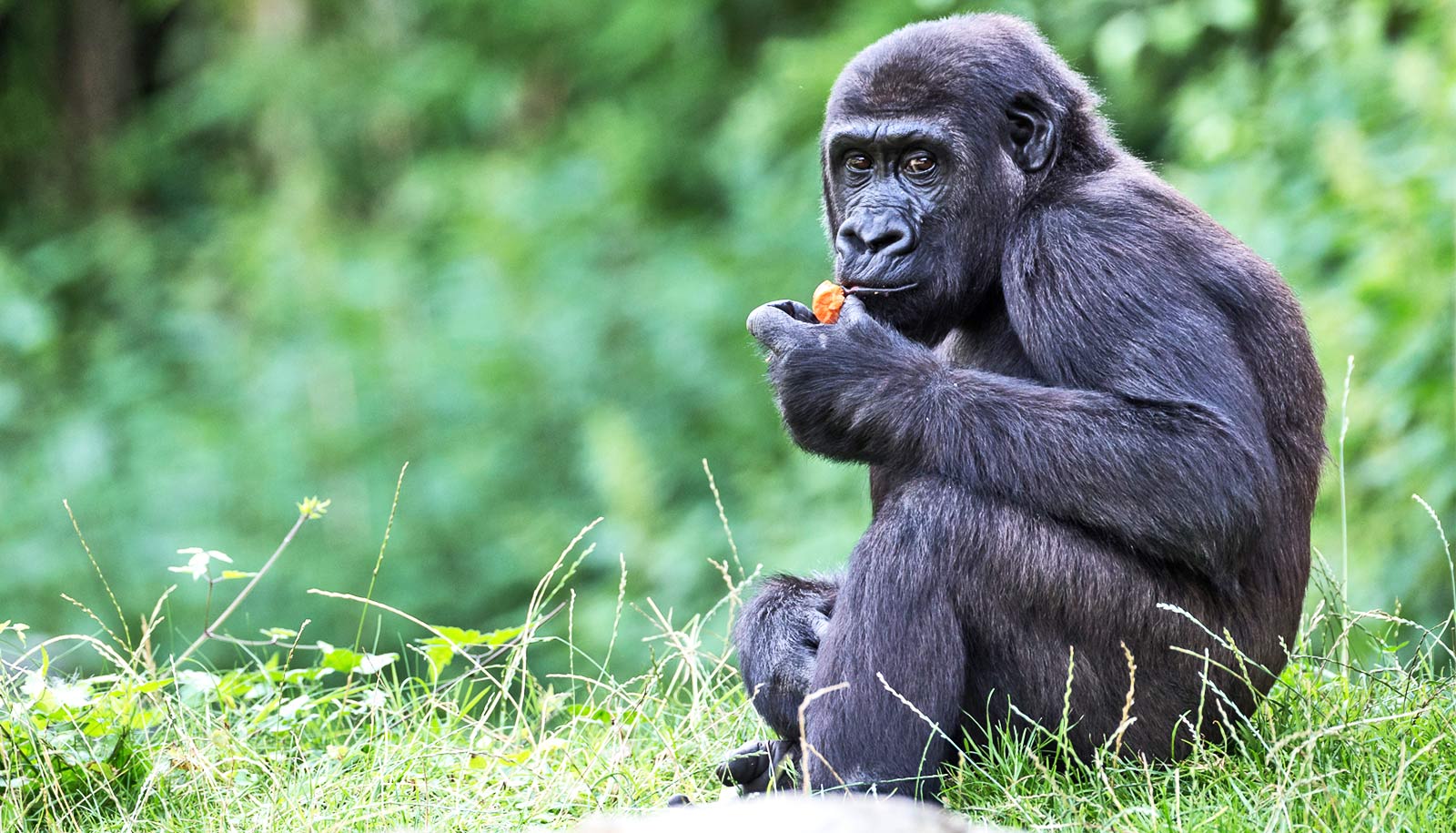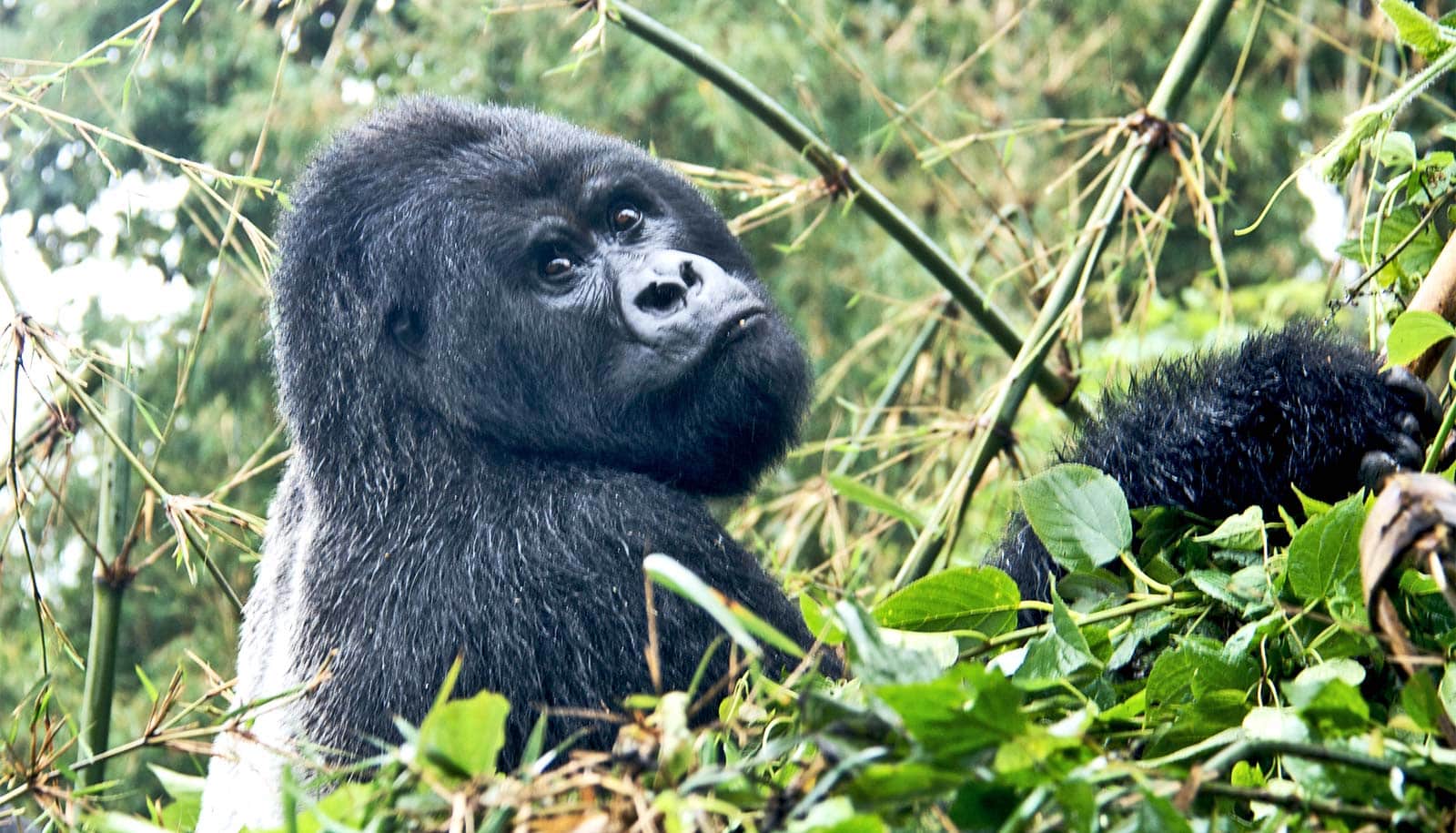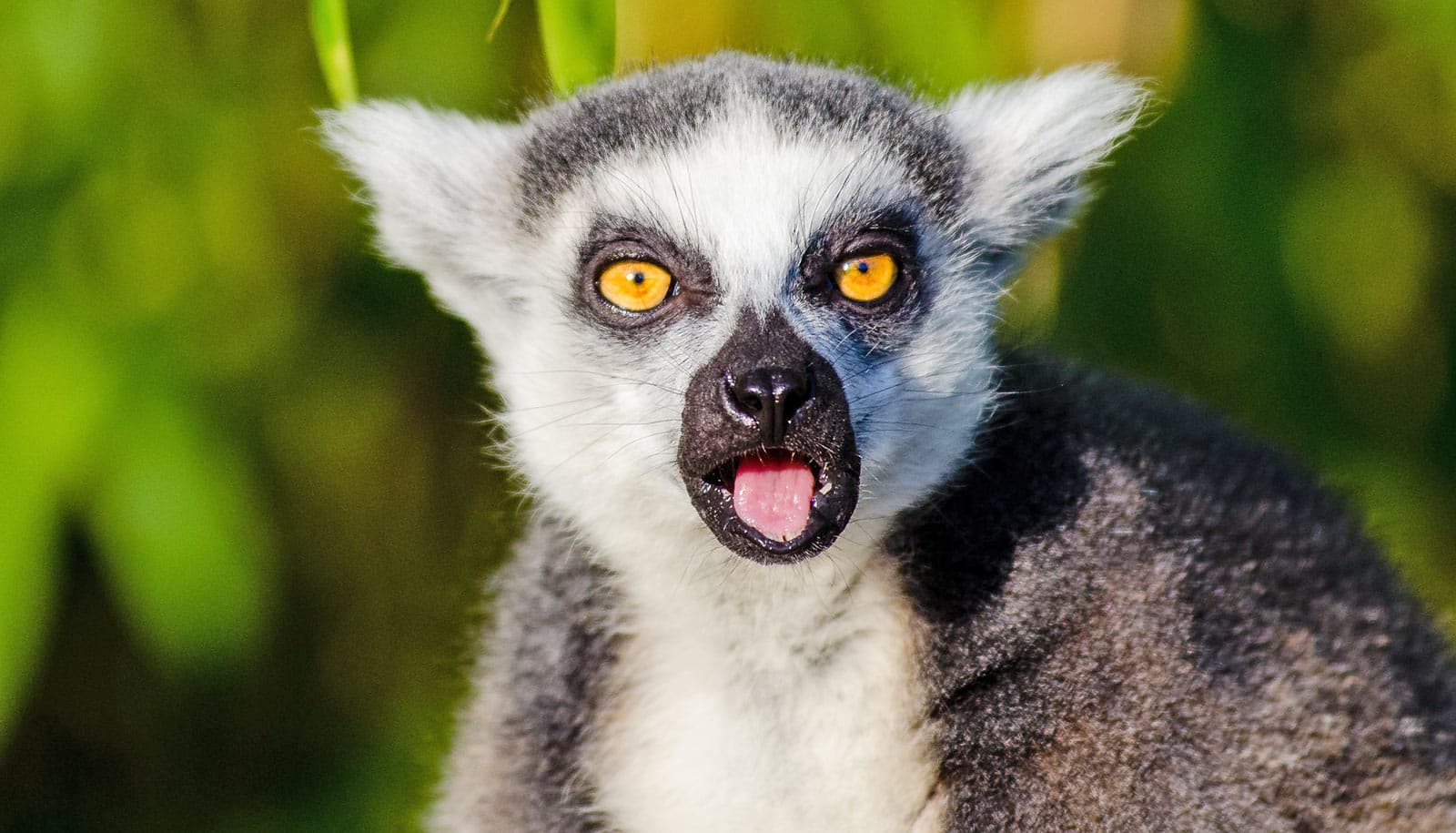A new study finds significant diversity among gorilla gut microbiomes, suggesting that what constitutes a “healthy” microbiome can vary between individuals.
The findings move researchers closer to developing tools that can use the microbiome to diagnose potential health challenges for gorillas in human care.
The gut microbiome refers to the ecosystem of microbial organisms that exist in the gastrointestinal tract of animals. Research has found that the type and number of microbes present can significantly affect an animal’s health and well-being.
“Longitudinal data sets that characterize a gut microbiome over time can be hugely useful for establishing what a healthy normal is, which can help us determine when things are out of balance and may affect an animal’s health,” says Erin McKenney, an assistant professor of applied ecology at North Carolina State University and coauthor of the study in the journal Animals.
“Our work here is currently the longest-term, most heavily sampled dataset that captures what healthy gut microbiomes look like in gorillas that are under human care.”
“And yet we feel this is really just the tip of the iceberg,” says corresponding author Kimberly Ange-van Heugten, an associate professor of animal science. “We’re finding that the more we learn, the more we appreciate how much there is still to learn about the relationship between gut microbiomes and health in gorillas.”
For this study, researchers from half a dozen institutions worked together to better understand how the gut microbiomes of western lowland gorillas (Gorilla gorilla gorilla) vary across individuals, across different institutions, and over time.
“It’s important to look at gorillas at different institutions because zoos often have different management protocols—they may provide gorillas with different diets, housing, access to outdoor space, and so on,” McKenney says. “All of these factors could potentially influence a gorilla’s gut microbiome.”
To that end, the research team collected fecal samples from 19 gorillas in human care at three institutions: six at the Denver Zoo, five at the Riverbanks Zoo in South Carolina, and eight at the North Carolina Zoo. The ages of the gorillas ranged from 2 to 45. Samples were collected every two weeks for seven months. The researchers then analyzed the samples to determine which microbes were present in each sample, and in what amounts.
The researchers detected profound differences in the complexity of the microbial communities found in individual gorillas, in terms of which kinds of microbes were present, how many kinds of microbes were present, and the relative abundance of the different types of microbes present. These differences could not be linked primarily to diet or other variables.
“In other words, the microbial differences between two gorillas were not driven primarily by variations between institutions; we found minor differences related to environmental variables, but not substantial ones,” McKenney says.
“That means two gorillas could both be healthy and yet have very different microbiomes,” Ange-van Heugten says. “That suggests it is important to understand what an individual gorilla’s healthy microbiome looks like in order to detect changes that could indicate a health problem.”
Previous studies have documented variation among individuals, across a variety of species.
“But long-term studies, like this one, help us identify how those differences relate to health, if at all,” McKenney says. “Our research emphasizes the importance of understanding what ‘healthy’ means across individuals, over time, for any population or species of interest.”
“We looked only at gorillas that are in human care, not at wild populations,” Ange-van Heugten says. “But our findings highlight that even if free-ranging gorillas and gorillas in human care have different microbiomes, that doesn’t necessarily mean one population is healthy and one isn’t. We need longitudinal studies from many populations of healthy animals to understand more about what constitutes a ‘normal’ microbiome for a species or an individual.”
“It’s interesting that previous studies of humans also detected microbial profiles that differ between individuals but remain fairly consistent over time,” McKenney says. “This suggests that individual context may be important at least across primates—and perhaps across all different species. Obviously a lot of additional work is needed to explore that possibility, but it’s very exciting.”
Katrina Eschweiler, a former graduate student at NC State who is now at the Denver Zoo, is the paper’s first author. Additional coauthors are from the University of Nebraska at Omaha, the University of Nebraska-Lincoln, the Denver Zoo, the North Carolina Zoo, and Nanjing Normal University.
Partial support for the study came from the Primate Microbiome Project at the University of Nebraska-Lincoln.
Source: NC State



